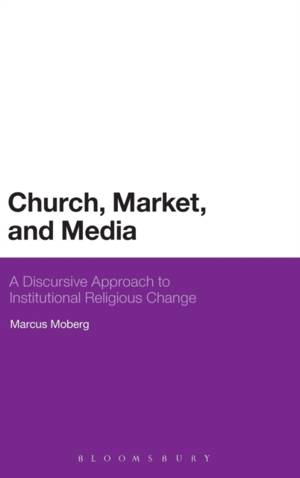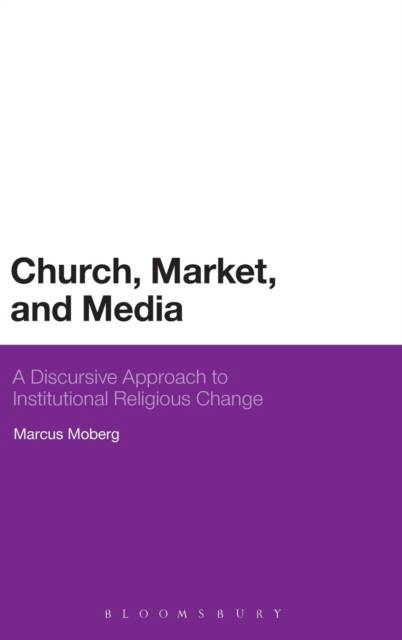
Bedankt voor het vertrouwen het afgelopen jaar! Om jou te bedanken bieden we GRATIS verzending (in België) aan op alles gedurende de hele maand januari.
- Afhalen na 1 uur in een winkel met voorraad
- In januari gratis thuislevering in België
- Ruim aanbod met 7 miljoen producten
Bedankt voor het vertrouwen het afgelopen jaar! Om jou te bedanken bieden we GRATIS verzending (in België) aan op alles gedurende de hele maand januari.
- Afhalen na 1 uur in een winkel met voorraad
- In januari gratis thuislevering in België
- Ruim aanbod met 7 miljoen producten
Zoeken
Church, Market, and Media
A Discursive Approach to Institutional Religious Change
Marcus Moberg
Hardcover | Engels
€ 296,95
+ 593 punten
Uitvoering
Omschrijving
Marcus Moberg offers a new model of religion and religious life in the post-war era, through focusing on the role of markets and media as vectors of contemporary social and cultural change - and therefore institutional religious change. While there is wide agreement among sociologists of religion that there this area is transforming on a global scale, there is less agreement about how these changes should best be approached and conceptualized.
In a time of accelerating institutional religious decline, institutional Churches have become ever more susceptible to market-associated discourse and language and are ever more compelled to adapt to the demands of the present-day media environment. Using discourse analysis, Marcus Moberg tracks how new media and marketing language and concepts have entered Christian thinking and discourse.
Church, Market, and Media develops a framework that approaches changes in the contemporary religious field in direct relation to the changing socioeconomic makeup of contemporary societies on the whole. Through focusing on the impact of markets and media within the contemporary religious setting of mainline institutional Christian churches in the Western world, the book outlines new avenues for further theorizing the study of religious change.
In a time of accelerating institutional religious decline, institutional Churches have become ever more susceptible to market-associated discourse and language and are ever more compelled to adapt to the demands of the present-day media environment. Using discourse analysis, Marcus Moberg tracks how new media and marketing language and concepts have entered Christian thinking and discourse.
Church, Market, and Media develops a framework that approaches changes in the contemporary religious field in direct relation to the changing socioeconomic makeup of contemporary societies on the whole. Through focusing on the impact of markets and media within the contemporary religious setting of mainline institutional Christian churches in the Western world, the book outlines new avenues for further theorizing the study of religious change.
Specificaties
Betrokkenen
- Auteur(s):
- Uitgeverij:
Inhoud
- Aantal bladzijden:
- 216
- Taal:
- Engels
Eigenschappen
- Productcode (EAN):
- 9781474280570
- Verschijningsdatum:
- 13/07/2017
- Uitvoering:
- Hardcover
- Formaat:
- Genaaid
- Afmetingen:
- 156 mm x 234 mm
- Gewicht:
- 476 g

Alleen bij Standaard Boekhandel
+ 593 punten op je klantenkaart van Standaard Boekhandel
Beoordelingen
We publiceren alleen reviews die voldoen aan de voorwaarden voor reviews. Bekijk onze voorwaarden voor reviews.









